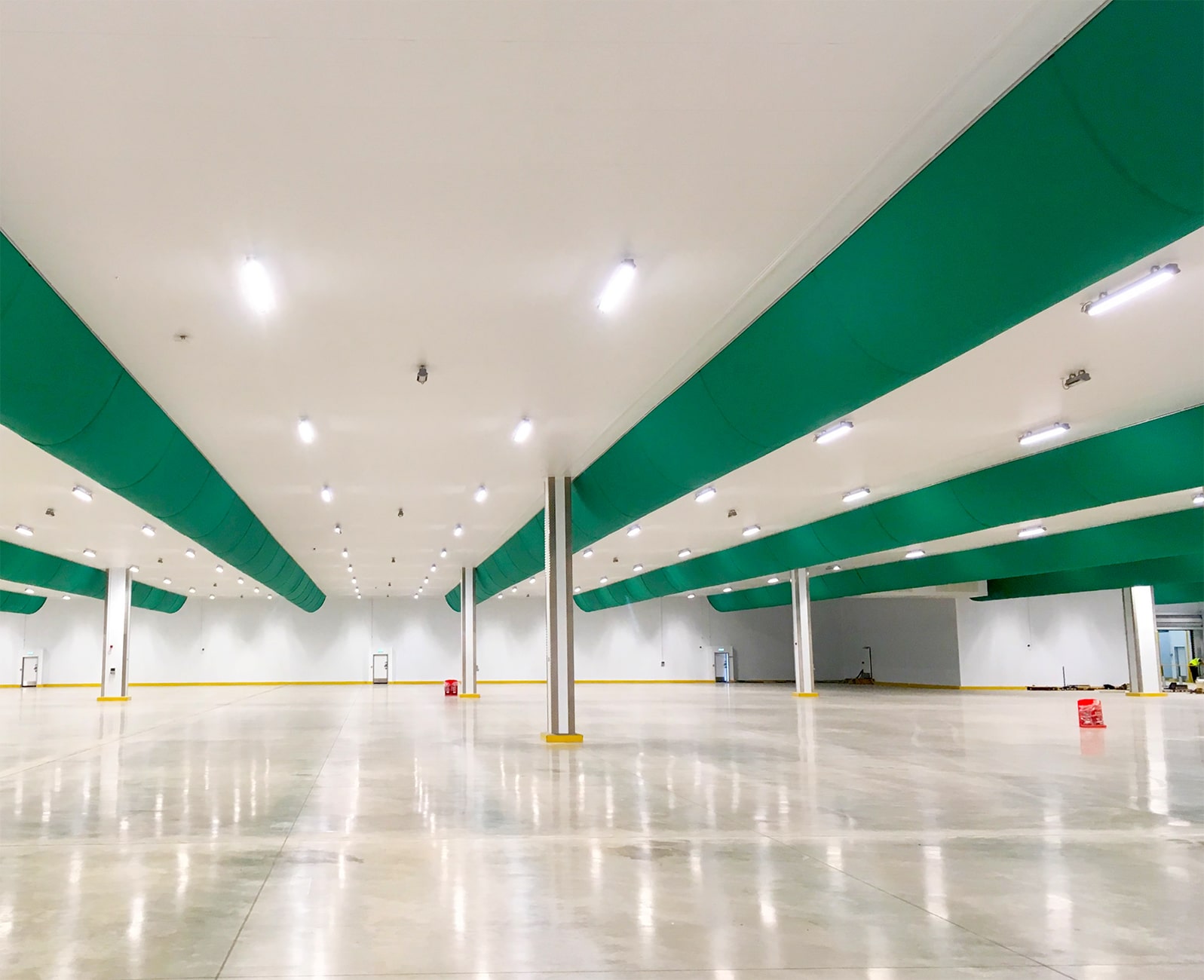The Key Considerations When Installing Fabric Air Diffusers


Fabric air diffusers, also known as fabric ducts, are becoming an increasingly popular alternative to traditional metal ducting in commercial, industrial, and educational environments. Thanks to their lightweight nature, energy efficiency, and customisable design, fabric ducting offers a modern solution to air distribution challenges. However, successful installation is essential to achieving optimum performance. Whether retrofitting into an existing building or integrating with a new HVAC system, there are several key considerations to bear in mind when installing a fabric duct.
The Purpose of Fabric Ducting Installation
Before selecting any fabric duct system, it’s essential to understand the specific requirements of the space in which it will be installed. Are you distributing cool air, warm air, or both? Will the ducting be visible to occupants, such as in an open-plan office or gym, or hidden in a ceiling void? These answers help determine the style, material, and air dispersion method of the chosen fabric duct.
For instance, in open areas, aesthetic considerations may be just as important as function. Colour, shape, and suspension method should align with the interior design, while still delivering reliable air performance. In contrast, for warehouse or industrial spaces, durability and even air distribution might take priority.
Fabric Ducting Airflow and Diffusion Requirements
The performance of fabric ducting depends heavily on how air is introduced into the space. Proper diffuser design ensures that air is dispersed evenly, without draughts or hot and cold spots. There are various methods of air dispersion to choose from, including micro-perforations, laser-cut holes, and nozzles, each suited to different air velocities and applications.
During the design phase, it’s vital to assess airflow rates, room volume, and occupant activity to ensure the selected diffuser meets comfort and efficiency goals. Oversized or poorly placed diffusers can result in energy waste and inconsistent climate control.
Structural and Spatial Planning
While fabric ducting is lightweight and generally easier to install than rigid metal alternatives, accurate spatial planning is still crucial. Installers must ensure that ceiling heights, suspension points, and service clearances are compatible with the chosen fabric duct configuration.
For example, sagging or improperly tensioned ducts can compromise airflow and aesthetics. Support systems such as aluminium rails or tension cables need to be precisely aligned and securely anchored. It’s also important to ensure other building services like lighting, sprinklers, or signage do not obstruct the duct path or affect airflow.
Integrating Fabric Diffusers with Existing HVAC Systems
When retrofitting fabric ducts into an existing building, they must be correctly sized and positioned to work with the existing air handling unit (AHU) and overall system layout. If airflow volume, pressure, or temperature is not compatible with the duct design, performance issues can arise.
Working with a specialist in fabric duct installation can help avoid these pitfalls. They can evaluate your current system and make any necessary adjustments to ensure seamless integration.
Cleaning and Maintaining Fabric Ducts
One of the main advantages of fabric ducting is that it is typically easier to clean than metal ductwork. Most systems are made from machine-washable materials that can be removed and reinstalled with minimal disruption. However, cleaning access should be factored into the installation plan from the beginning.
Zipped sections or removable panels may be included to enable straightforward maintenance. Planning for regular inspections and cleanings will help maintain airflow quality and prolong the system’s lifespan.
Fire and Hygiene Regulations
Depending on the type of facility, fabric ducts may need to comply with specific fire retardancy and hygiene standards. For example, food processing plants or healthcare settings may require antimicrobial coatings or certified flame-retardant materials. Ensure the selected duct system meets all relevant regulations and industry requirements.
Installing a fabric duct is more than just hanging a length of textile. It involves precise planning, thoughtful integration, and ongoing maintenance. When these considerations are addressed early, fabric ducting offers a flexible, energy-efficient, and visually appealing solution for modern air distribution.
Whether you’re upgrading your current HVAC setup or embarking on a new project, understanding the essentials of fabric duct installation will ensure a successful outcome that delivers both comfort and compliance.
Looking for more information?
Our experts are on hand to answer any questions. Why not give us a call or drop us a message, We’ll work with you to find the right solution.
Contact us

